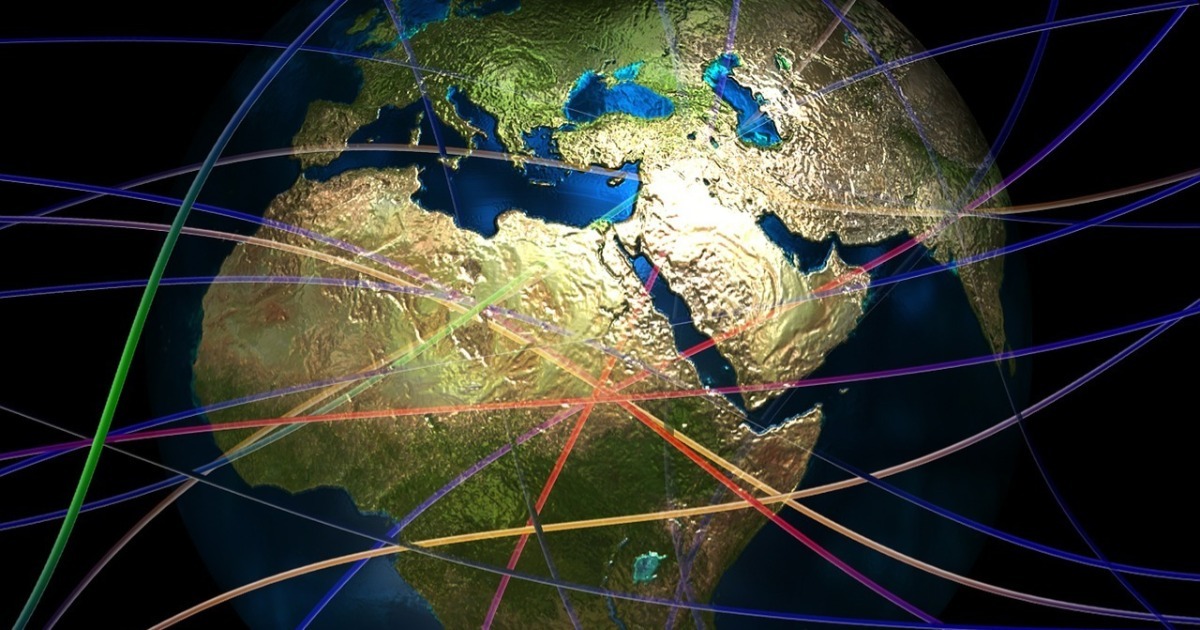Globalization is a process of economic, political and social expansion that leads to greater interdependence between states and the flexibilization of their relations.
The aim is to improve commercial and technological exchange, while having a profound impact on socio-cultural processes.
The union of states to create economic blocs, massive migrations, the development of technology and its accessibility are some of the aspects to consider in order to gauge the impact of globalization in the world.
| Area | Advantages | Disadvantages |
|---|---|---|
| Economy |
|
|
| Technology |
|
|
| Culture |
|
|
| Environment |
|
Advantages of globalization
Globalization has led to greater openness in economic, social, technological and cultural terms that generates benefits for States and their citizens, such as:
Greater and more efficient economic exchange
The circulation and exchange of products and services around the world foster new economic and trade policies, standardizing certain processes, which were previously complicated.
This results in a greater variety in the commercial offer, which encourages consumption and stimulates the economy.
Technological exchange
Before globalization, it took emerging economies and underdeveloped countries a long time to gain access to cutting-edge technologies. This implied a backwardness in productive terms, which made the gap with developed countries more visible.
Globalization has improved access to technological resources, having a positive impact on the economy, education and health systems in countries with unfavorable conditions.
All this stimulates development, inventiveness and innovation, which contributes to progress.
Cultural diversity
Globalization has generated new waves of migration and displacement for various reasons (political, social, labor). This generates a greater openness towards previously unknown cultural manifestations, as well as a greater understanding and respect for diversity.
This exchange is often expressed in a multiculturalism that is now seen as an everyday social phenomenon, especially in large cities.
Greater linguistic richness
Multiculturalism and access to foreign technologies and content has had a profound impact on language and ways of communicating.
It is common to use foreign words or expressions, as well as to have a second language (usually English). This broadens the possibilities for personal, academic and professional growth for the new generations.
Expanding the scope of Human Rights
Most countries have subscribed to international conventions or treaties inherent to the respect of Human Rights, through the United Nations Organization or similar organizations.
Global communication
Thanks to the development of the Web and telecommunications, it is possible to communicate instantaneously and efficiently from virtually anywhere in the world.
The globalization of markets generates a greater interest in information and world news. What happens in a particular part of the world can have repercussions on the economy or international relations.
Stimulating tourism
The expansion of maritime, air and land routes brought about by globalization has boosted tourism in recent decades.
In addition, easy access to information about the chosen destination, and the possibility of handling money digitally contribute to the expansion of this phenomenon.
Tourism, in turn, becomes a way to support the local economy and favor cultural exchange.
See also:
Disadvantages of globalization
Globalization, in addition to trade alliances between nations and massive population displacements, has brought with it some negative aspects that have a direct impact on the lives of citizens
Increase in interventionist practices
International agreements or conventions between countries contain a commitment to respect such agreements, but also the possibility of sanctions or interventionist practices.
This can jeopardize the sovereignty of countries, and also expose their citizens to the consequences of such practices.
Disappearance of local culture and national identity.
In an increasingly multicultural world, the loss of identity is becoming palpable, giving way to transculturation.
Although cultural diversity is not a negative fact in itself, the invisibilization or disappearance of cultural manifestations that are part of a nation’s identity is.
Those expressions belonging to minority cultures or ethnic groups tend to disappear, being replaced or displaced by a dominant culture, which is generally of foreign origin.
Even more worrying is that this phenomenon is being exploited by radical political manifestations that, far from generating welfare, contribute to generate political and social division.
See also Difference between acculturation and transculturation.
Widening inequality gap
Globalization brought with it the expansion of capitalism, which drives a free market economy and a minimum level of interventionism on the part of the state.
The concentration of capital in global business conglomerates harms local small and medium-sized enterprises, and contributes to the increase of unemployment in the world.
In addition, labor practices typical of capitalism have generated a precariousness of working conditions and a decline in the quality of life of the productive population.
The cheapening of labor due to technological development.
The use of technology for industrial purposes has helped to increase the production of various items around the world, which drives economic development.
However, the large-scale use of technology, especially in agriculture, has led to a decline in the quantity and quality of local labor.
Environmental deterioration on a global scale
The excessive increase in the production of consumer goods generates a series of problems that affect the environment.
The use of chemicals in the textile industry, plastic and technological waste, or deforestation for the exploitation of wood or soil, are just a few examples.
On the other hand, the increase in tourism in places that were previously little known has generated serious damage to many ecosystems, and in some cases irreparable.




